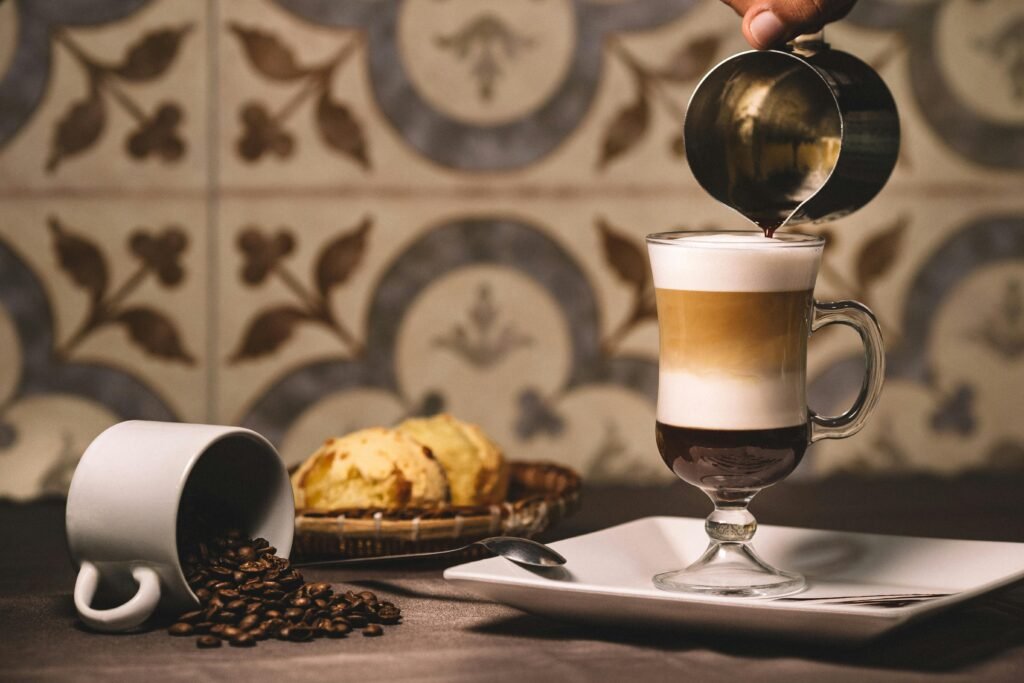Coffee ice cream is a beloved treat for many, offering a delicious blend of creamy sweetness with the rich, robust flavor of coffee. However, for those who are sensitive to caffeine or simply curious about its presence in their dessert, the question arises: does coffee ice cream contain caffeine? The answer is not as straightforward as one might assume. While coffee is a primary ingredient in coffee ice cream, the amount of caffeine present can vary significantly depending on the recipe and production process.
Table of contents
Traditionally, coffee ice cream is made by infusing coffee flavor into a base mixture of cream, sugar, and sometimes eggs. This flavor infusion can be achieved using brewed coffee, espresso, or coffee extract. While coffee itself contains caffeine, the concentration can diminish during the cooking and freezing process. Additionally, factors such as the type of coffee used, the brewing method, and the length of time it’s infused into the ice cream base can all influence the final caffeine content. As a result, some coffee ice creams may contain only trace amounts of caffeine, while others may have a more noticeable kick.

Understanding the caffeine content in coffee ice cream is not only important for those monitoring their caffeine intake but also for individuals with dietary restrictions or health concerns related to caffeine consumption. Whether you’re seeking a caffeine boost or prefer to indulge in a decaffeinated treat, it’s essential to read labels carefully and inquire about the ingredients and production methods when selecting coffee ice cream. Ultimately, the caffeine content in coffee ice cream can vary, but one thing remains constant – its delightful combination of creamy texture and coffee flavor, making it a perennial favorite among dessert enthusiasts.
Understanding Caffeine in Coffee Ice Cream
1. Factors Affecting Caffeine Content
When it comes to determining the caffeine content in coffee ice cream, several factors play a significant role. Primarily, the type of coffee used in the ice cream-making process influences the final caffeine concentration. Espresso, for instance, tends to have a higher caffeine content per ounce compared to regular brewed coffee. Thus, ice creams made with espresso may contain more caffeine than those made with regular coffee. Additionally, the brewing method and duration of infusion can affect how much caffeine is extracted from the coffee. Longer brewing times typically result in higher caffeine levels, as more of the compound is dissolved into the liquid. However, during the cooking and freezing process of making ice cream, some of the caffeine may degrade or be lost, further complicating the estimation of caffeine content.
2. Variability in Recipes and Production Methods
Another factor contributing to the variability of caffeine content in coffee ice cream is the diversity of recipes and production methods employed by different manufacturers. Each ice cream maker may have their own proprietary recipe, which could involve varying amounts of coffee and other ingredients. Furthermore, the specific technique used to infuse coffee flavor into the ice cream base can impact the caffeine concentration. Some manufacturers may opt for natural coffee extracts or concentrates, while others may use brewed coffee or espresso. The choice of ingredients and production processes can significantly alter the final product’s taste, texture, and caffeine content.
3. Regulatory Guidelines and Labeling Practices
In many regions, food regulatory agencies provide guidelines for labeling the caffeine content in products such as coffee ice cream. However, these guidelines may not always be strictly enforced, leading to inconsistencies in labeling practices across different brands and manufacturers. Some companies may choose to prominently display the caffeine content on their packaging, while others may provide it in less conspicuous locations or omit it altogether. As a result, consumers may need to carefully scrutinize product labels or contact manufacturers directly to obtain accurate information about caffeine levels.
4. Consumer Preferences and Dietary Considerations
The varying caffeine content in coffee ice cream can cater to diverse consumer preferences and dietary considerations. For individuals who enjoy the stimulating effects of caffeine, opting for ice creams with higher caffeine levels may provide a more satisfying experience. On the other hand, those who are sensitive to caffeine or prefer to limit their intake may seek out decaffeinated or low-caffeine alternatives. The availability of options allows consumers to make informed choices based on their individual needs and preferences, promoting inclusivity and catering to a wider audience.
5. Health Implications and Considerations
While moderate caffeine consumption is generally considered safe for most individuals, excessive intake can lead to adverse health effects such as insomnia, nervousness, and gastrointestinal disturbances. Consequently, individuals with caffeine sensitivities or underlying health conditions may need to monitor their caffeine intake, including that from coffee ice cream. Furthermore, caffeine consumption during certain times, such as late in the day, can disrupt sleep patterns and affect overall well-being. Understanding the caffeine content in coffee ice cream empowers consumers to make informed decisions regarding their dietary habits and lifestyle choices, promoting overall health and wellness.
6. The Pleasure of Coffee Ice Cream
Beyond its caffeine content, coffee ice cream offers a sensory experience that transcends its functional properties. The creamy texture, rich flavor, and aroma of coffee combine to create a delightful indulgence that appeals to the senses and evokes feelings of comfort and satisfaction. Whether enjoyed on its own, paired with desserts, or incorporated into elaborate recipes, coffee ice cream remains a beloved treat for many. Its versatility and universal appeal make it a staple in dessert menus and household freezers alike, serving as a source of joy and pleasure for enthusiasts of all ages.

Conclusion
In conclusion, the caffeine content in coffee ice cream is a nuanced aspect influenced by various factors, including the type of coffee used, production methods, regulatory guidelines, and consumer preferences. Despite the challenges in accurately estimating caffeine concentration, understanding these factors empowers consumers to make informed choices aligned with their dietary needs and preferences. Whether seeking a stimulating treat or opting for a decaffeinated option, the diverse range of coffee ice creams available caters to a wide spectrum of tastes and requirements. Moreover, the pleasure derived from indulging in coffee ice cream extends beyond its caffeine content, encompassing its rich flavor, creamy texture, and nostalgic appeal.
As a beloved dessert enjoyed by millions worldwide, coffee ice cream continues to captivate taste buds and evoke feelings of comfort and satisfaction. Its versatility lends itself to various culinary applications, from simple scoops to elaborate desserts, further cementing its status as a perennial favorite. Whether enjoyed on its own or as part of a decadent creation, coffee ice cream remains a source of joy and pleasure, bringing people together and igniting moments of shared delight. In essence, while the caffeine content adds an intriguing dimension to coffee ice cream, its enduring popularity transcends functional considerations, embodying the timeless allure of indulgent treats that nourish both the body and the soul.
Questions (FAQ’s)
Does coffee ice cream contain as much caffeine as a cup of coffee?
The caffeine content in coffee ice cream can vary depending on factors such as the type of coffee used, production methods, and recipe variations. While some coffee ice creams may contain a comparable amount of caffeine to a cup of coffee, others may have significantly less due to factors like dilution during the manufacturing process or the use of decaffeinated coffee.
Is there a significant difference in caffeine content between regular and decaffeinated coffee ice cream?
Generally, decaffeinated coffee ice cream contains much less caffeine compared to its regular counterpart. Decaffeinated coffee undergoes a process to remove most of the caffeine, resulting in significantly reduced caffeine levels. However, it’s essential to check product labels or contact manufacturers directly for specific information about caffeine content, as practices may vary among different brands.
Are there any health concerns associated with consuming coffee ice cream with caffeine?
While moderate caffeine consumption is generally considered safe for most individuals, excessive intake can lead to adverse effects such as insomnia, nervousness, and gastrointestinal disturbances. It’s essential for individuals with caffeine sensitivities or underlying health conditions to monitor their intake, including that from coffee ice cream. Additionally, consuming caffeinated products, including coffee ice cream, close to bedtime may disrupt sleep patterns and affect overall well-being.






